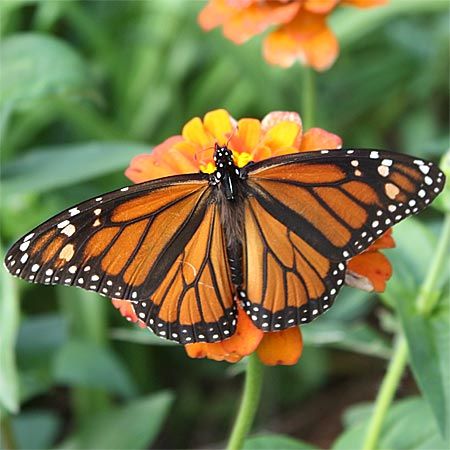The Tennessee highways now host a friendly new presence that requires quick ground-level observation for spotting. The beautiful orange-and-black wings of monarch butterflies have marked the skies of the Volunteer State for multiple generations. These delicate flying creatures have encountered difficulties in recent times. The Tennessee Department of Transportation (TDOT) has intervened to provide help.
The Tennessee Department of Transportation has launched an imaginative project to transform roadsides into vibrant wildflower fields that support monarch butterflies. The outcomes speak volumes about their success when the butterflies share their opinion on the results.

Highway departments usually bring to mind images of asphalt surfaces and road signs rather than prairies and pollinators. But times are changing. Growing environmental awareness has led to recognizing roadside spaces as essential habitats for wildlife, especially for imperiled insects such as monarch butterflies. The well-being of plants and ecosystems depends significantly on the efforts of pollinators such as butterflies and bees. The decline of monarch butterfly populations triggered concern beyond environmentalists as farmers, gardeners, and governmental bodies also understood that immediate action was required.
TDOT’s pollinator program presents a basic yet ingenious strategy. The Tennessee Department of Transportation established feeding and egg-laying stations for monarch butterflies by planting native pollinators and milkweed along state highways. Milkweed produces a milky sap, which gives it its name and serves as the exclusive plant where monarch caterpillars can grow. A lack of milkweed will prevent monarch caterpillars from developing, leading to fewer monarchs in future populations. Maintaining milkweed habitats will allow us to witness monarch butterflies displaying their orange wings during summer.
These initiatives provide benefits that reach more than just monarch butterflies. TDOT’s pollinator corridors produce positive results that benefit everyone involved. Roadsides planted with wildflowers demand less maintenance compared to traditional grass-covered areas. TDOT’s planting strategy allows large areas of natural vegetation to thrive without regular mowing during the year. TDOT achieves economic efficiency and environmental benefits through reduced mowing, saving fuel and labor time while lowering pollution levels. Drivers experience improved scenic views because of these roadsides. As you drive along the interstate, you will see fields of purple coneflowers, red bee balm, and milkweed’s vivid greenery, which looks far better than endless stretches of low-cut turf grass.
Like any large-scale project, this one presents substantial challenges, too. Maintaining wildflowers along roadsides demands more strategic planning than one might initially think because it needs to ensure driver safety. TDOT needs to manage the development of habitats while maintaining clear visibility at intersections, ramps, and medians. Officials must monitor tall wildflowers because they can become hazardous when growing excessively. The key lies in meticulously picking seeds that allow native plants to grow while avoiding obstructing road signs and pavement encroachment.
But the payoff is enormous. The monarch butterfly population has experienced a steady decline over several years because their natural habitats have been destroyed. TDOT’s pollinator-friendly roadways connect habitat patches throughout Tennessee, allowing monarchs and other pollinators to locate necessary resources more efficiently. Research shows how “stepping stones” support wildlife movement, and Tennessee roadsides have transformed into butterfly corridors that assist these fragile species in moving between milkweed patches.
The program has generated significant enthusiasm among volunteers and local communities as it continues to progress. Classes travel on educational trips to study pollinators, and garden clubs collect milkweed seeds. The new roadside colors have caught the attention of passersby, who take photos of the blooming flowers and sometimes capture the monarch butterfly as it flutters around. Pictures on social platforms broadcast how remarkable events unfold directly beside our roadways.
The story provides hope because it demonstrates a societal change in our perception of land and butterflies. Early indicators show that TDOT’s project is progressing well, and it stands to set an example for states aiming to support pollinator populations. Transportation departments across the country should be able to implement similar programs with ease. Envision how pollinator corridors could blanket the nation along significant interstates and rural roads. The concept depicts an America where natural ecosystems flourish harmoniously with developed structures.
For now, Tennessee is leading by example. Once simple roadside areas have become critical safe spaces for monarch butterflies and pollinators. And it’s not just beneficial—it’s beautiful, too. While traveling on the highway, you should take great care of your surroundings. A bright orange flutter stands out against moving vehicles while signaling successful conservation efforts. TDOT’s program expansion will likely support monarch populations and allow future generations to witness these magnificent butterflies.
We never realized monarch conservation could be achieved through bare roadside flower planting. The Tennessee Department of Transportation is just starting its mission to support these cherished butterflies, and the progress made so far is worth celebrating.






